Growing indoor plants has always been a passion of mine. There’s something truly special about having a piece of nature thriving inside your home, bringing life and beauty to your space. One of my all-time favorite houseplants is the Begonia Lucerna, also known as Angel Wing Begonia. Its delicate foliage and vibrant flowers never fail to enchant me.
As a plant enthusiast in the UK, I’ve come to appreciate the versatility of Begonia Lucerna. Native to South America, it has adapted well to indoor conditions here, making it a popular choice among houseplant lovers. With a bit of care and attention, this stunning plant can flourish and reward you with an abundance of radiant blooms.
Appearance of Begonia Lucerna

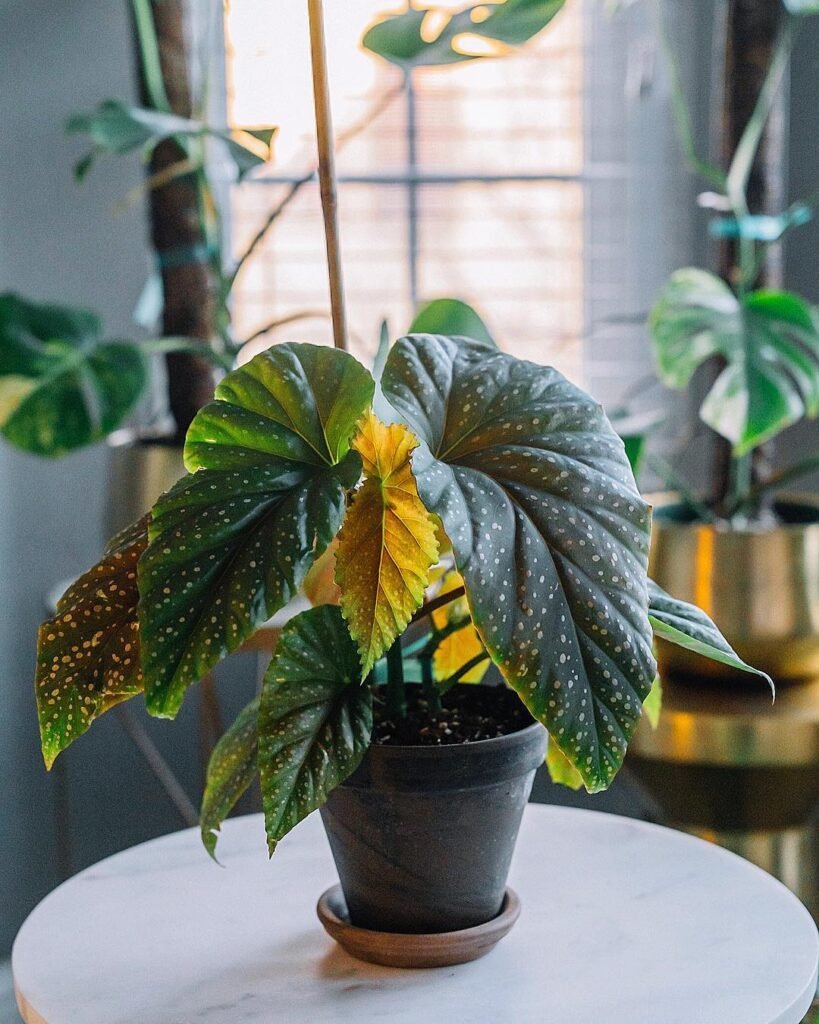
Begonia Lucerna, also known as Angel Wing Begonia, is a stunning cane-type begonia that adds elegance to any indoor space. With its upright stems and heart-shaped leaves, this plant is a true showstopper.
The leaves of Begonia Lucerna are a sight to behold, as they are commonly speckled or streaked with red tints or backing. This unique feature gives the leaves a captivating and distinctive appearance. The glossy green foliage adds a touch of freshness and vitality to your home.
What makes Begonia Lucerna even more fascinating are the variations in leaf patterns. Some varieties may have white or silver dots on the upper side of the leaf, creating a delightful contrast against the green background.
This plant can grow to a height of 12-30 inches and spread to a width of 12-24 inches, making it a perfect choice for both small and large spaces. Its lush and vibrant foliage is a sight to behold and will surely be the center of attention.
Aside from its attractive foliage, Begonia Lucerna also produces pendulous clusters of flowers. These blooms come in a wide range of colours, including shades of pink, red, white, and orange, adding a burst of colour and charm to your indoor garden.
 Did you know the Begonia Lucerna, also known as Angel Wing Begonia, can flower throughout the year with the right care? This makes it a unique plant that keeps indoor spaces vibrant with its charming blooms.
Did you know the Begonia Lucerna, also known as Angel Wing Begonia, can flower throughout the year with the right care? This makes it a unique plant that keeps indoor spaces vibrant with its charming blooms.
Light Requirements for Begonia Lucerna
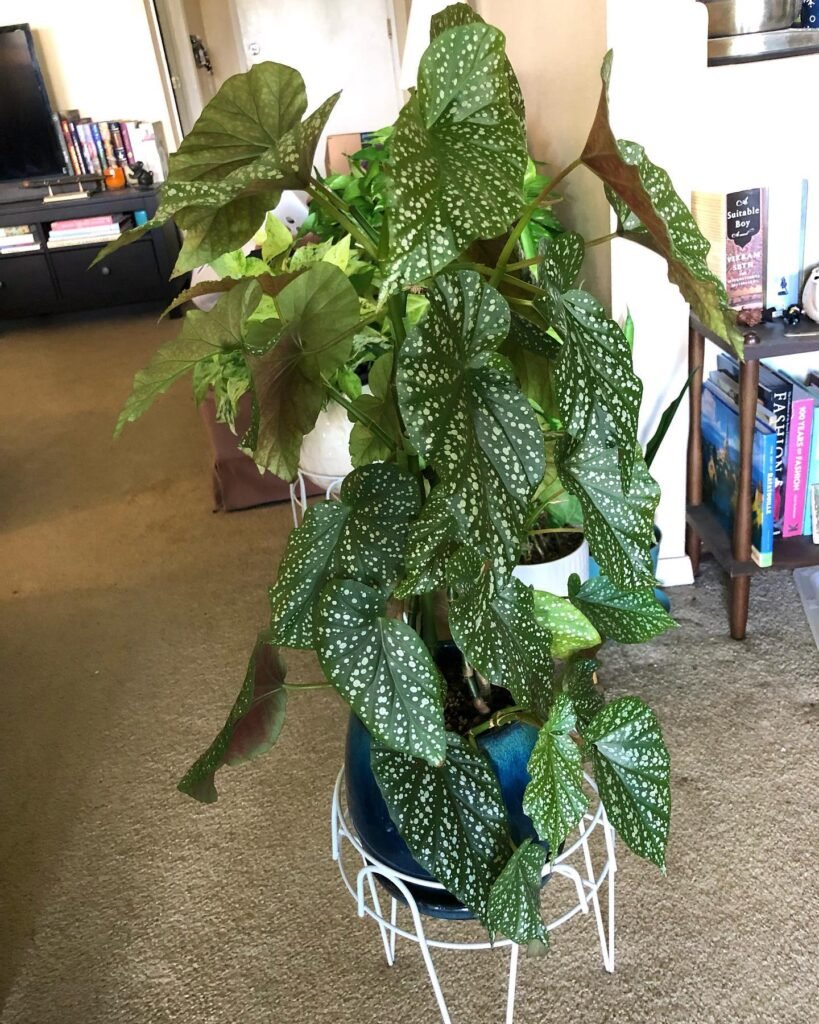

Begonia Lucerna, commonly known as Angel Wing Begonia, is an indoor plant that thrives in bright, indirect light. To ensure its health and flowering, it is essential to provide the right amount of light throughout the year. While Begonia Lucerna can tolerate some direct sunlight in the winter, it is crucial to keep it away from harsh, intense light sources like the sun. Placing the plant on a windowsill with partial shade is ideal for its growth.
In low light conditions, such as in rooms without much natural sunlight, the plant may still grow but may not produce as many blooms. To encourage optimal growth and flowering, it is recommended to place Begonia Lucerna in an area with bright, indirect light. This will help maintain its overall health and vibrant appearance.
- Place Begonia Lucerna in an area with bright, indirect light year-round
- Avoid placing the plant in direct sunlight or harsh, intense light
- Partial shade on a windowsill is ideal for Begonia Lucerna’s growth
- In low light conditions, the plant may grow but produce fewer blooms
By meeting Begonia Lucerna’s light requirements, you can ensure that this beautiful indoor plant remains healthy and vibrant, adding a touch of natural beauty to your home.

Watering Tips for Begonia Lucerna


When it comes to watering your Begonia Lucerna, it’s important to find the perfect balance. This stunning indoor plant likes to be kept consistently moist, but not soggy.
The key is to allow the soil to dry about an inch from the surface before watering again. This will prevent overwatering, which can lead to root rot and damage the plant. On the other hand, underwatering can cause the edges of the leaves to brown and compromise the health of your Begonia Lucerna.
When it’s time to water, make sure to saturate the plant thoroughly. Pour water evenly over the soil until you see it drain out of the bottom of the pot. This ensures that the water reaches the roots and provides the necessary moisture for healthy growth.
Remember to maintain proper moisture levels consistently. Check the soil regularly to assess its dryness, using your finger to gauge the moisture level. If it feels dry about an inch below the surface, it’s time to water. However, if it still feels damp, hold off on watering for a little longer.
By following these watering tips, you’ll be able to keep your Begonia Lucerna happy and thriving. Ensuring the right moisture balance will help prevent common issues like leaf browning and promote lush, vibrant growth.

Fertilizing and Soil for Begonia Lucerna
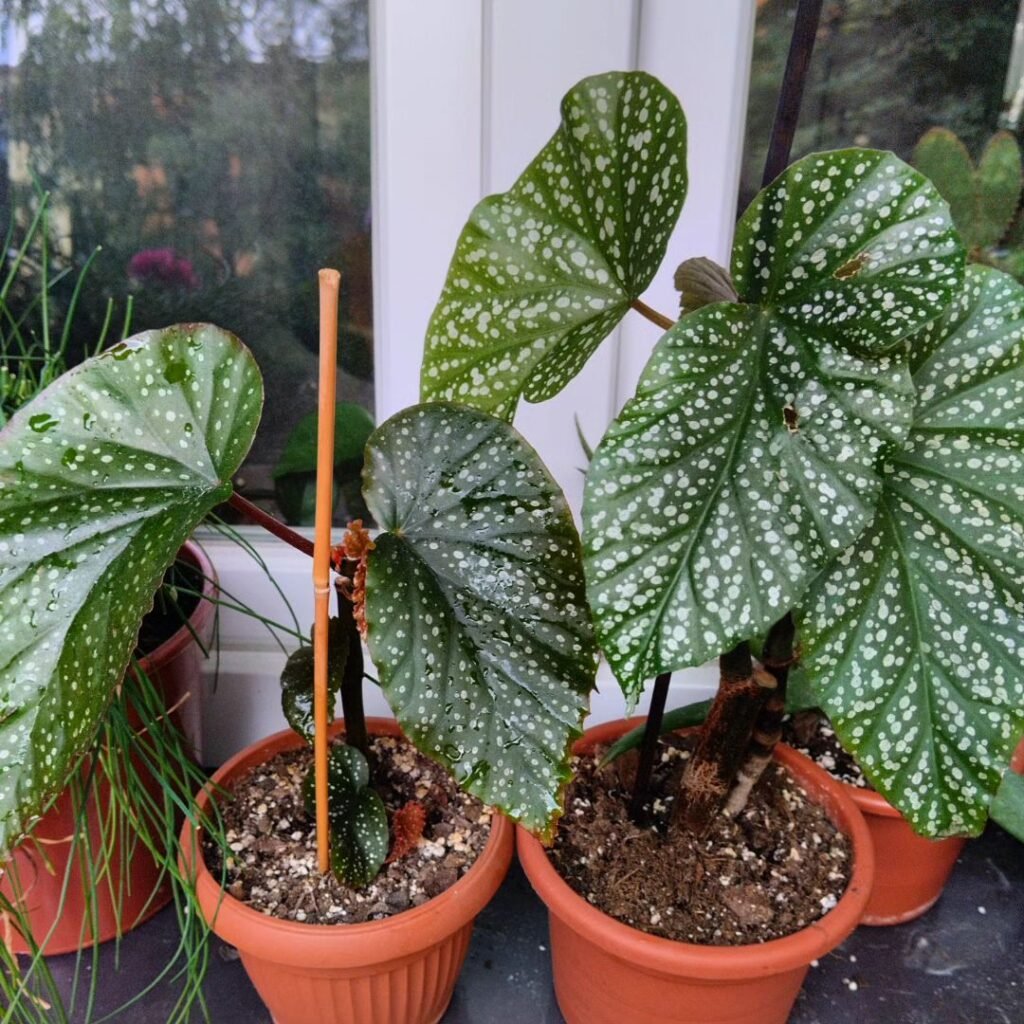
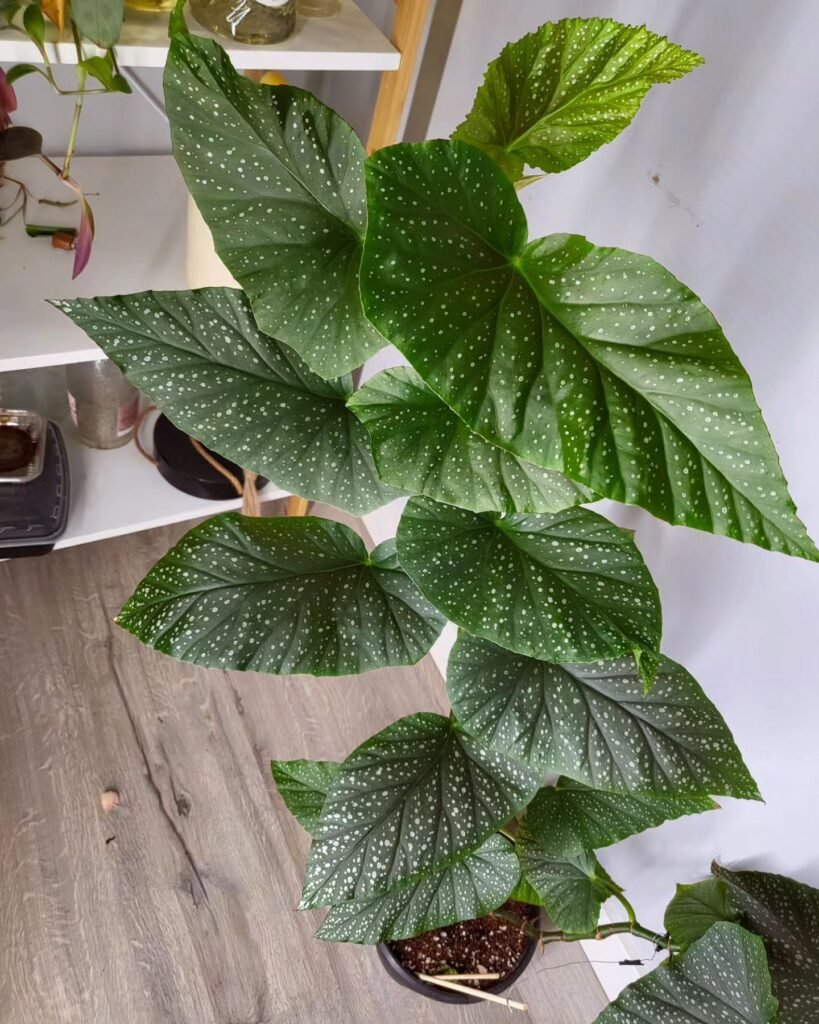
When it comes to fertilizing and soil for Begonia Lucerna, it’s important to provide the right nutrients and growing medium for optimal growth and vibrant blooms. Here are some tips to ensure your begonia thrives:
Choosing the Right Soil
Begonia Lucerna thrives in a soil mixture that is moist but well-drained. I recommend using a slightly heavy soil mix that contains organic matter. This type of soil allows the plant’s root system to establish well and supports its tall stems properly. Ensure the soil has good drainage to prevent waterlogged roots, which can lead to root rot.
Fertilizing the Plant
Fertilizing Begonia Lucerna is essential for its growth and color. I suggest using a liquid fertilizer weekly at a quarter strength, or biweekly at half strength, for best results. Choose a balanced, water-soluble fertilizer specifically formulated for houseplants. During the blooming season, a high-phosphorus fertilizer can be used to increase the chance of flowering. Follow the instructions on the fertilizer label to ensure proper application.
Application Tips
- Apply the liquid fertilizer directly to the soil around the base of the plant.
- Avoid getting the fertilizer on the leaves or flowers to prevent burning.
- Water the plant thoroughly after fertilizing to help distribute the nutrients evenly.
Remember to adjust your fertilizing schedule based on the specific needs and growth rate of your Begonia Lucerna. Regular fertilization, combined with the right soil conditions, will help your plant thrive and produce beautiful blooms.

Pruning and Maintenance of Begonia Lucerna
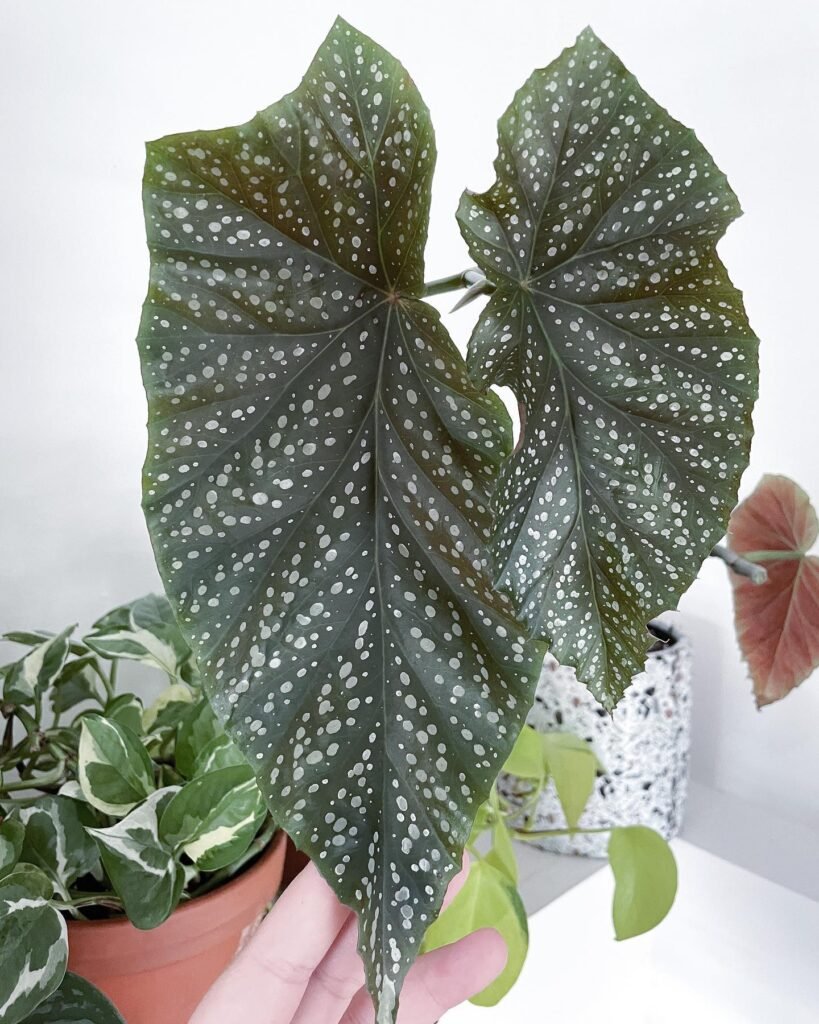
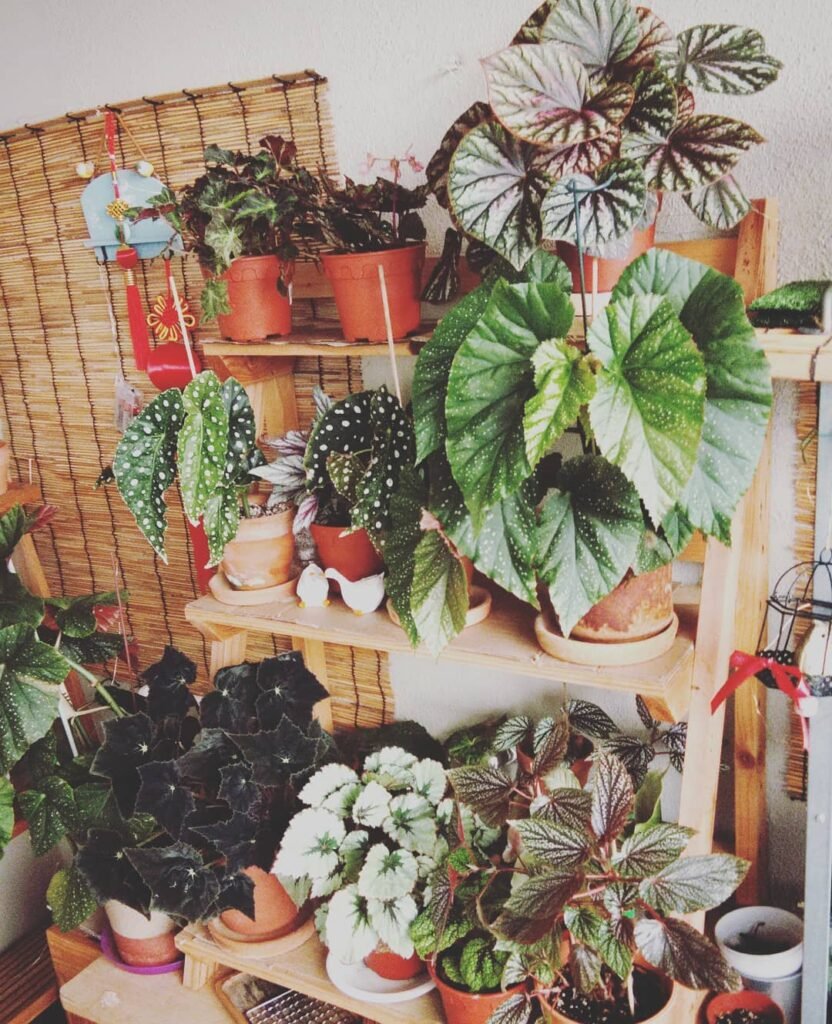
Begonia Lucerna, known as Angel Wing Begonia, is a low-maintenance indoor plant that requires minimal pruning and maintenance to keep it looking its best.
To improve the appearance of Begonia Lucerna and prevent the spread of diseases, it’s important to regularly remove any dead or yellowing leaves. This simple task not only enhances the plant’s overall aesthetic but also ensures its continued health.
If your Begonia Lucerna becomes leggy or overgrown, pruning can help maintain its shape and size. By selectively trimming back the stems, you can encourage bushier growth and a more compact form.
Regular inspection for pests and diseases is also essential to catch any issues early. By thoroughly examining your plant on a regular basis, you can identify any potential problems and take appropriate measures for treatment.
Incorporating these simple pruning and maintenance practices into your houseplant care routine will help ensure the long-term health and vitality of your Begonia Lucerna.

Propagating Begonia Lucerna
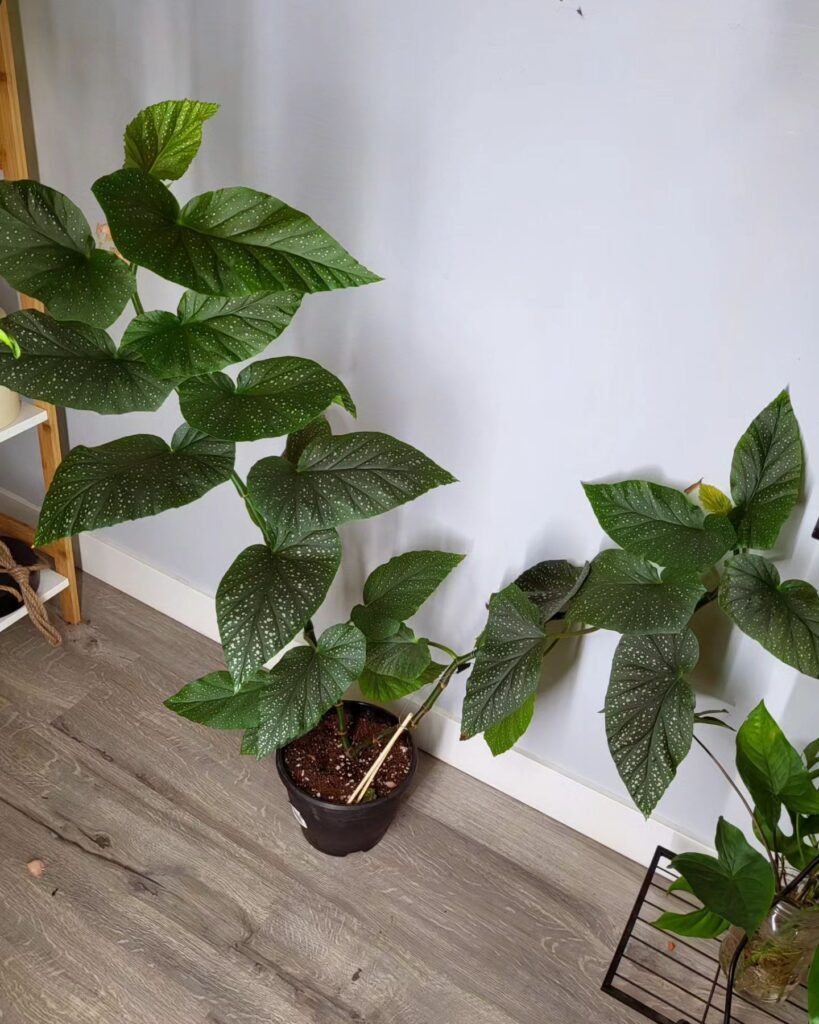
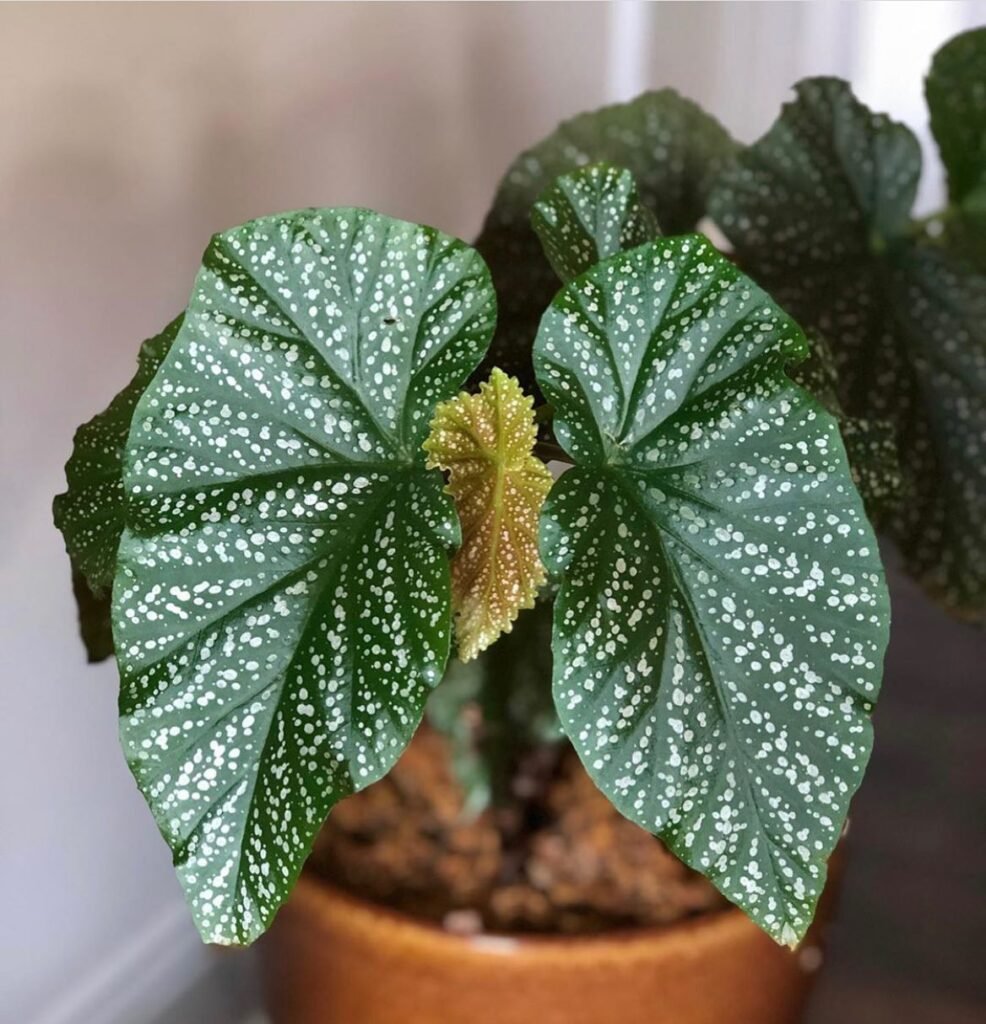
If you’re looking to expand your collection of beautiful indoor plants, propagating Begonia Lucerna (Angel Wing Begonia) is a great way to do so. With just a few simple steps, you can create new plants that will thrive in your home. Here’s how to propagate Begonia Lucerna:
1. Choose the Right Time
In order to increase your chances of success, it’s best to propagate Begonia Lucerna in the spring when new growth is emerging. This is when the plant is most actively growing, which will encourage the cutting to root and establish itself more quickly.
2. Take a Leaf-Tip Cutting
Select a healthy Begonia Lucerna plant and look for a 2-3 inch leaf-tip cutting without any blooms. Using clean, sharp scissors, cut the stem just below a leaf node. This is where new roots will form. Make sure to wear gloves as the plant’s sap can cause skin irritation.
3. Prepare the Potting Soil
Fill a small pot or container with a well-draining potting soil. Make a small hole in the soil with your finger or a pencil, about an inch deep, where you will place the cutting.
4. Insert the Cutting
Gently dip the cutting’s cut end in a rooting hormone powder to promote better root development. While rooting hormone is not essential, it can improve your chances of success. Insert the cutting cutting-side down into the prepared hole in the potting soil. Press the soil gently around the base of the cutting to secure it in place.
5. Provide the Right Conditions
To help the cutting root successfully, it needs a warm and humid environment. Place the pot in a location that receives bright, indirect light, but avoid direct sunlight that can scorch the cutting. Keep the soil consistently moist, but not waterlogged, by misting the cutting and the soil surface regularly.
6. Watch for Root Growth
Be patient and monitor the cutting for signs of new growth. Within a few weeks, you should start seeing new leaves and roots beginning to form. This indicates that the cutting has rooted successfully and is ready to grow into a new plant.
7. Transplanting the New Plant
Once the roots have become well-established, typically after a few months, you can carefully transplant the new Begonia Lucerna into a larger pot or your desired container. Use a well-draining potting mix and ensure the pot has good drainage holes. Continue to care for the plant as you would with a mature Begonia Lucerna.
By following these simple steps, you can propagate Begonia Lucerna and enjoy the beauty of this stunning plant throughout your home. Remember to have patience and provide the right conditions for successful propagation. Happy gardening!

Repotting Tips for Begonia Lucerna
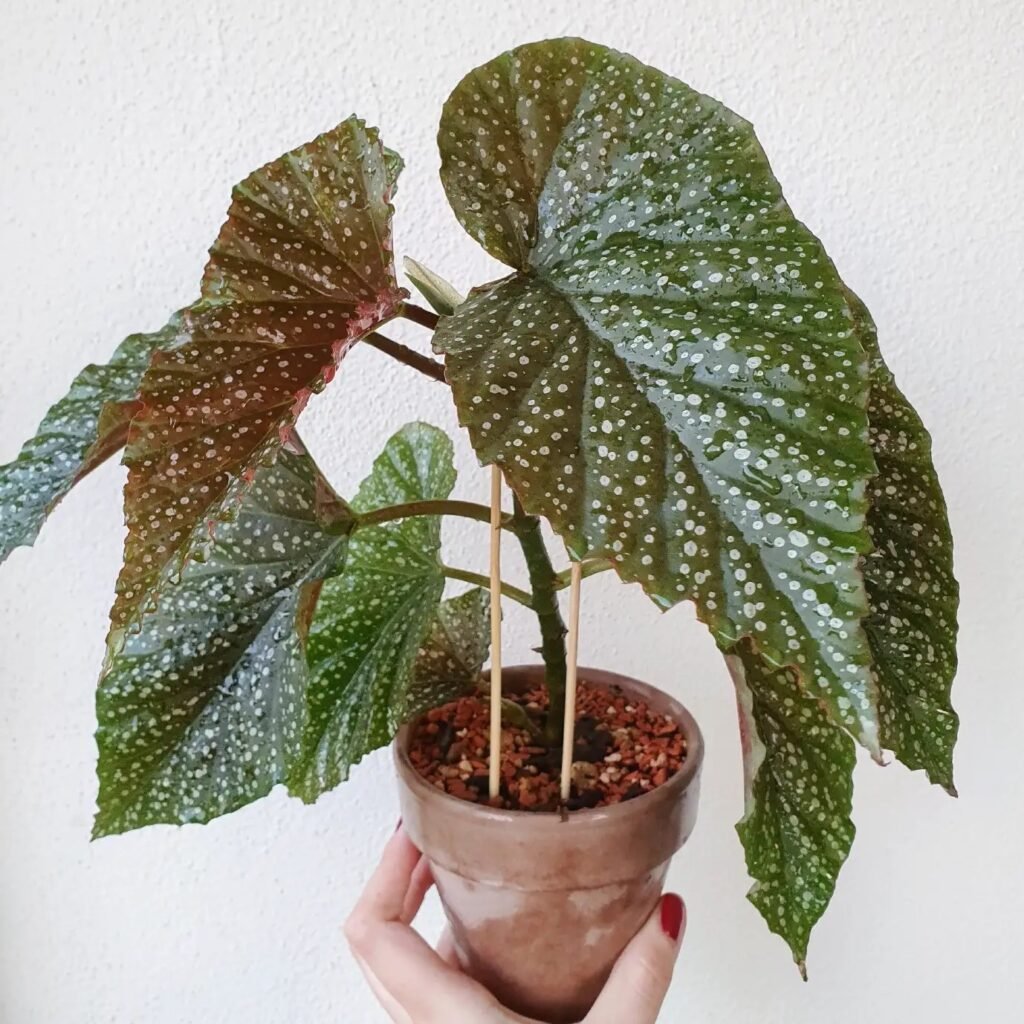
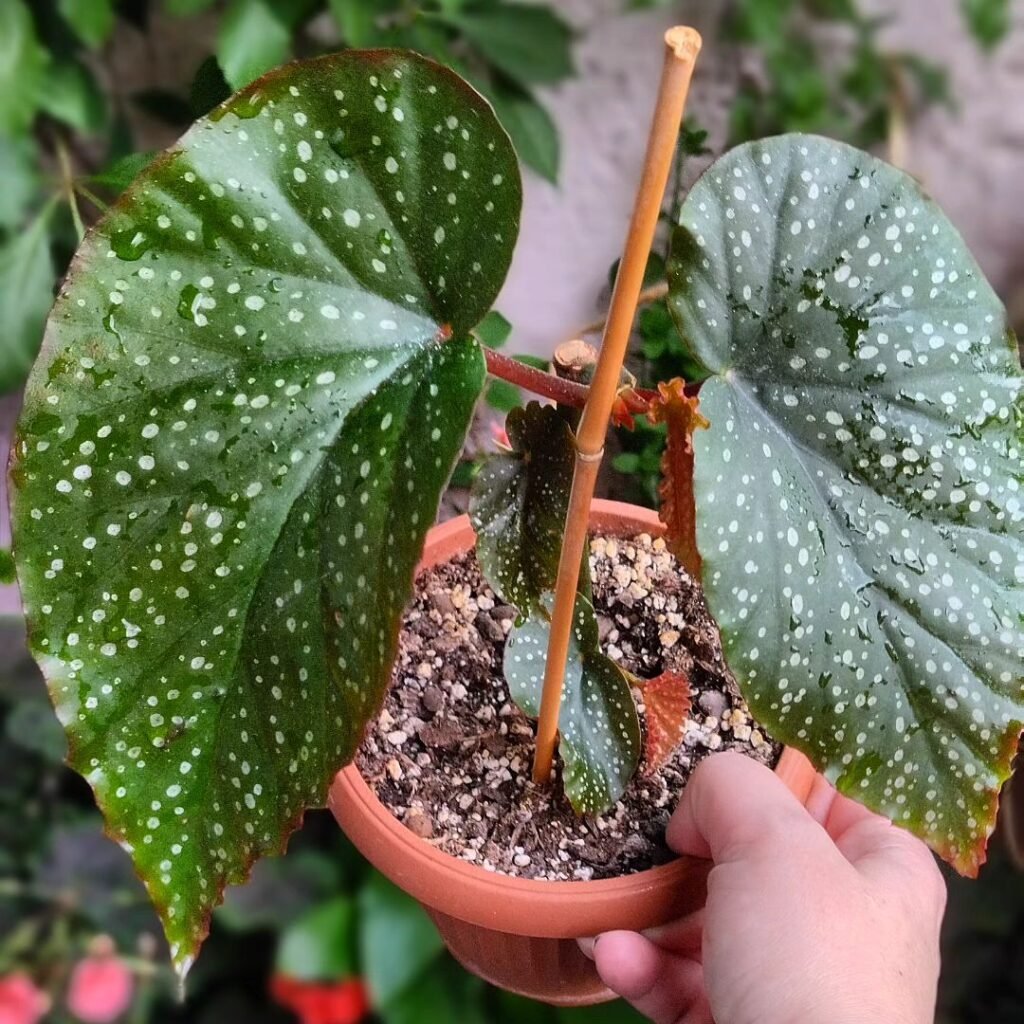
If you want your Begonia Lucerna, commonly known as Angel Wing Begonia, to thrive indoors, proper repotting is essential. Here are some tips to guide you through the repotting process.
- Timing: Repot your Begonia Lucerna in early spring, just as the first flush of new growth appears. This is the ideal time when the plant is coming out of its dormant state and can adjust to its new environment more easily.
- Signs for repotting: Begonia Lucerna prefers to be slightly pot-bound, so repotting is only necessary when the plant has exhausted its potting media or when the pot becomes unstable. Look for roots coming out of the drainage holes or roots densely filling the pot as signs that repotting is needed.
- Choosing the right pot: Select a pot that provides adequate drainage for your Begonia Lucerna. Opt for a size that is slightly larger than the current pot to allow for future growth. Ceramic or terracotta pots work well, as they provide stability and allow excess moisture to evaporate.
- Potting mix: Fill the pot with a well-draining, nutrient-rich potting mix. You can use a commercial mix formulated for houseplants or create your own by combining equal parts of peat moss, perlite, and compost. This type of soil mixture will ensure proper drainage and provide the necessary nutrients for healthy growth.
- Repotting process: Carefully remove the Begonia Lucerna from its current pot, taking care not to damage the roots. Gently tease apart any tangled or compacted roots, making sure to remove any dead or rotten roots. Place the plant in the new pot, adjusting the soil level so that the top of the root ball is slightly below the rim of the pot. Firmly press the soil around the roots to secure the plant.
- Aftercare: After repotting, give your Begonia Lucerna a thorough watering to settle the soil around the roots. Place it in a location with bright, indirect light and continue regular care, including watering, fertilizing, and maintenance.
By following these repotting tips, you can ensure that your Begonia Lucerna has enough space to grow, allowing it to thrive and continue beautifying your indoor space.
 Did you know the Begonia Lucerna, or Angel Wing Begonia, boasts leaves that mimic angel wings with silver spots? A Victorian era gem, it brings historical elegance into modern homes.
Did you know the Begonia Lucerna, or Angel Wing Begonia, boasts leaves that mimic angel wings with silver spots? A Victorian era gem, it brings historical elegance into modern homes.
Helpful Video’s about Begonia Lucerna
Have a look at these marvellous videos I stumbled upon, all about looking after the Begonia Lucerna. They’re packed with advice to make caring for your plant absolutely straightforward. Perfect for anyone keen to start their gardening adventure!
- Best Begonia to Grow Indoors / Angel Wing Lucerna Begonia Plant
- My Begonia Collection! | Begonia lucerna, Begonia maculata & more
- Begonia Lucerna Care Tips
FAQ about Caring for Begonia Lucerna

Curious about the best ways to care for your Begonia Lucerna? You’ve come to the right spot! I’ve gathered all the essential advice to help you tend to your plant with ease. Whether it’s mastering the ideal watering schedule or addressing common concerns, you’re in capable hands.
Angel Wing Begonia thrives in bright, indirect sunlight. A spot near an east or west-facing window is ideal. Direct sunlight can scorch the leaves, so consider using a sheer curtain to diffuse strong light.
Water your plant when the top inch of soil feels dry. Over-watering can lead to root rot, so it’s crucial to let the soil partially dry out between waterings. In the UK’s cooler months, reduce watering frequency.
Use a light, well-draining potting mix. A mix of peat, perlite, and vermiculite works well. This ensures the roots receive adequate oxygen and drainage, preventing waterlogging.
Yes, but it’s frost-sensitive. Grow it in containers and bring it indoors before the first frost. Outside, place it in a sheltered spot with morning sun and afternoon shade.
Propagate using stem cuttings. Cut a 4-inch stem just below a node, remove lower leaves, and plant in moist soil. Keep warm and humid until new growth appears.
Yellow leaves can result from over-watering, poor drainage, or insufficient light. Assess your watering routine and ensure your plant is not sitting in water. Adjust its location for better light if necessary.
Prune in spring to encourage bushiness. Cut back any leggy growth, dead leaves, or flowers with clean, sharp scissors. This promotes healthy new growth.
Place the pot on a tray filled with pebbles and water, ensuring the pot is not sitting in water. The evaporating water increases humidity. Regular misting also helps.
Watch for mealybugs, spider mites, and aphids. Treat infestations early with insecticidal soap or neem oil, following product instructions.
Improve air circulation around your plant and reduce leaf wetness. If mildew appears, remove affected leaves and treat with a fungicide recommended for Begonias.
It prefers temperatures between 15°C and 25°C. Avoid placing it in draughty areas or near open windows in winter.
Repot in spring every 2-3 years or when roots outgrow the pot. Choose a pot one size larger with drainage holes and fresh potting mix.
Yes, it can be toxic if ingested by pets. Keep it out of reach of cats and dogs.
Leaf drop can occur due to low temperatures, over-watering, or sudden changes in environment. Ensure a stable environment and adjust care as needed.
Provide bright, indirect light and regular feedings during the growing season. Avoid high nitrogen fertilizers, as they can promote foliage at the expense of blooms.
Leaf curl can indicate under-watering, too much sun, or pest issues. Check the soil moisture, adjust light exposure, and inspect for pests.
Regular pruning and pinching off the tips of the plant can encourage a bushier growth. Do this in the spring to stimulate the plant to produce more lateral branches.
Yes, if your bathroom receives enough indirect light and is well-ventilated. The high humidity in bathrooms can benefit the plant, mimicking its tropical native environment.
Gently wipe the leaves with a damp cloth to remove dust. This not only keeps the plant looking attractive but also allows it to photosynthesize more efficiently.
I hope this FAQ has shed light on how to look after your Begonia Lucerna. If you’ve got more questions, please leave them in the comments. I’m here to help out. Remember, we all begin as novices in the world of gardening, and there’s constantly something new to discover as you nurture your leafy friend.
Conclusion
Begonia Lucerna is a versatile and beautiful indoor plant that can thrive in the UK with proper care. Its unique appearance and vibrant blooms make it a popular choice for houseplant enthusiasts. By providing the right light, water, fertilization, and maintenance, you can ensure the health and longevity of Begonia Lucerna in your home. Whether you are growing it for its foliage or its flowers, this plant is sure to bring beauty and joy to any indoor space.
Indoor plants have become increasingly popular in recent years, and Begonia Lucerna is a standout choice. Its heart-shaped leaves, speckled with red tints, add a touch of elegance to any room. The pendulous clusters of pink, red, white, and orange flowers create a stunning display that can last year-round with proper care.
If you’re new to plant propagation, Begonia Lucerna is an excellent choice to start with. It can be easily propagated from cuttings, allowing you to expand your collection or share this beautiful plant with friends and family. Remember to use a rooting hormone to increase the chances of success.
Overall, Begonia Lucerna is a rewarding houseplant that brings both aesthetic appeal and a sense of accomplishment as it thrives under your care. Whether you’re a seasoned plant enthusiast or just starting your indoor gardening journey, this begonia is sure to captivate you with its striking foliage and vibrant flowers.

